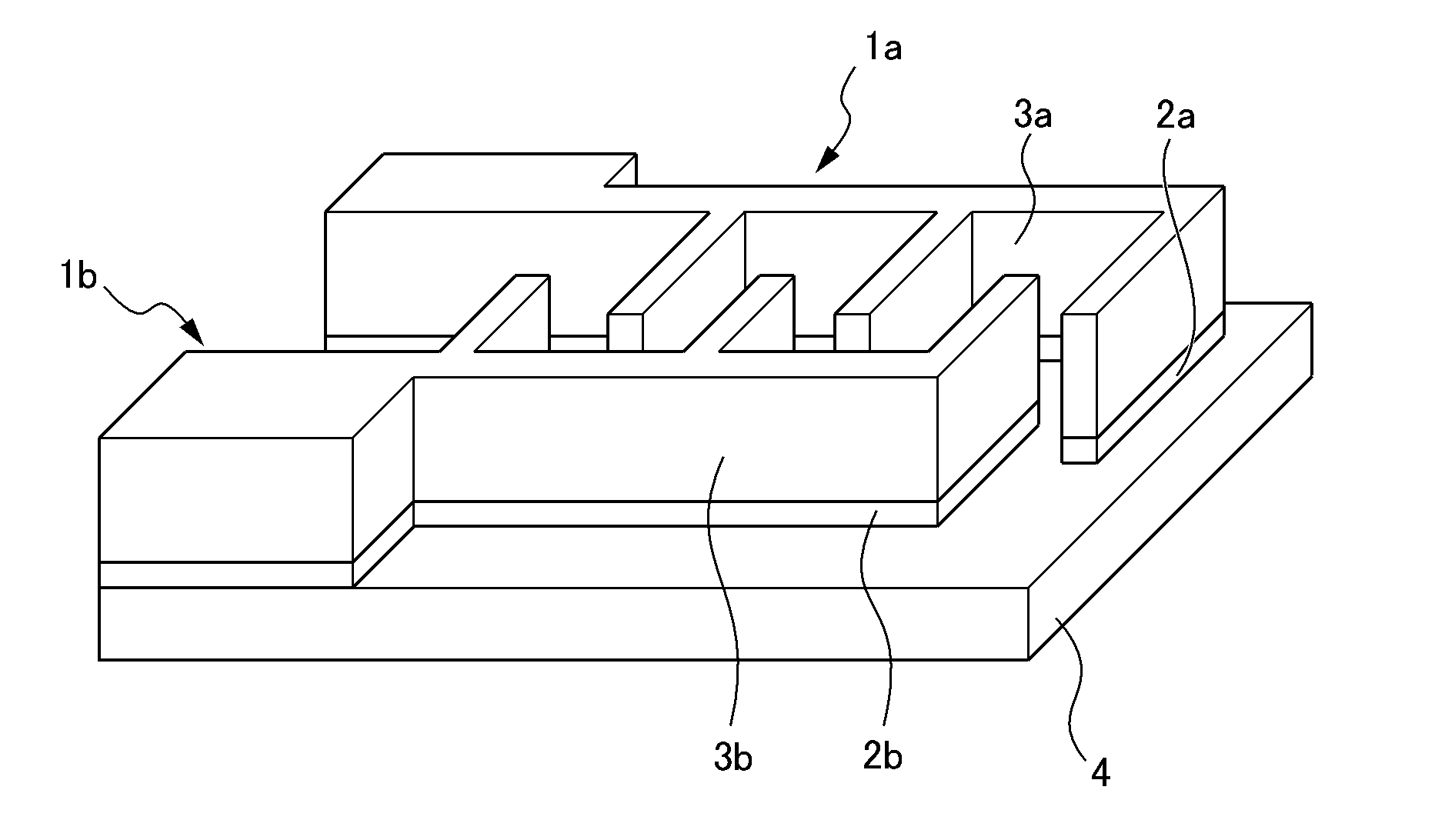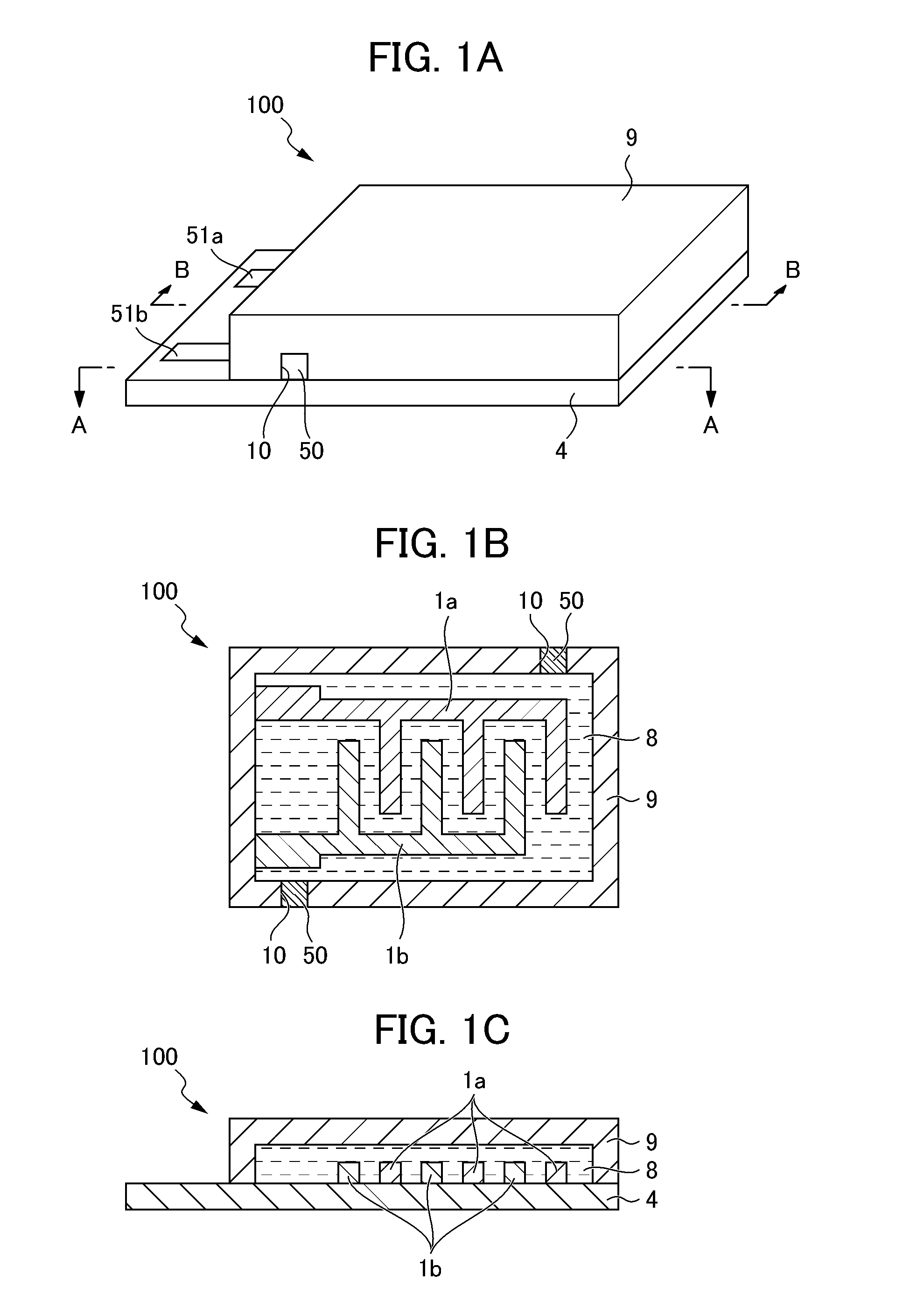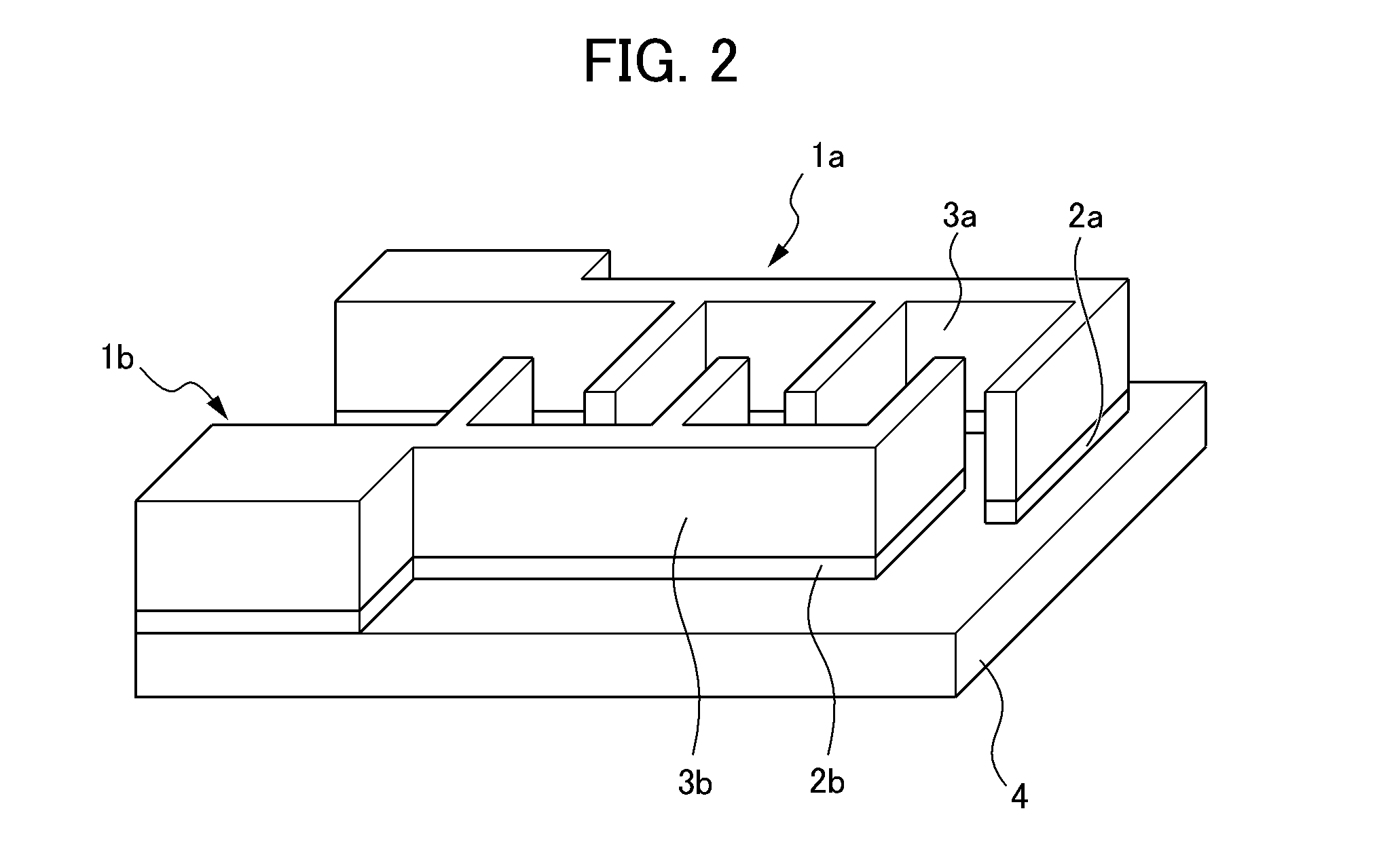Nonaqueous secondary battery, manufacturing method thereof and electrolyte
a secondary battery and manufacturing method technology, applied in the manufacture of batteries, cell components, final products, etc., can solve the problems of difficult to avoid consequent and achieve the effect of reducing thickness and avoiding deterioration in battery performan
- Summary
- Abstract
- Description
- Claims
- Application Information
AI Technical Summary
Benefits of technology
Problems solved by technology
Method used
Image
Examples
synthesis example 1
[0191]Propylene glycol monomethyl ether acetate (PGMEA) as a solvent was added to 70 parts by mass of a cresol-type novolac resin (mass average molecular weight: 30000) resulting from an ordinary method of addition condensation between a mixture of m-cresol and p-cresol (m-cresol / p-cresol=6 / 4 (mass ratio)) and formaldehyde in the presence of an acid catalyst, 15 parts by mass of naphthoquinone-1,2-diazide-5-sulfonic acid diester of 1,4-bis(4-hydroxyphenyl isopropylidenyl)benzene as a photosensitizing agent, and 15 parts by mass of poly(methyl vinyl ether) (mass average molecular weight: 100000) as a plasticizer such that the solid content concentration is 40 mass % followed by mixing and dissolving, thereby obtaining a resist composition 1. The resist composition 1 is novolac type, non-chemical amplification type, and positive type.
synthesis example 2
[0192]52.5 parts by mass of a cresol-type novolac resin (mass average molecular weight: 10000) resulting from an ordinary method of addition condensation between a mixture of m-cresol and p-cresol (m-cresol / p-cresol=6 / 4 (mass ratio)) and formaldehyde in the presence of an acid catalyst, 10 parts by mass of a polyhydroxystyrene resin VPS-2515 (manufactured by Nippon Soda Co.), 27.5 parts by mass of a resin expressed by Formula (1) below, 10 parts by mass of a resin expressed by Formula (2) below, 2 parts by mass of a compound expressed by Formula (3) below as an acid generator, 2 parts by mass of 1,5-dihydroxynaphthalene as a sensitizer, 0.01 parts by mass of triethylamine and 0.02 parts by mass of salicylic acid as additives, and 107 parts by mass of PGMEA and 6 parts by mass of gamma-butyrolactone as solvents were mixed and dissolved, thereby obtaining a resist composition 2. The resist composition 2 is chemical amplification type and positive type.
example 1
[0193]The interdigital electrodes 1a and 1b shown in FIG. 2 were produced using a screen printing process (the second pattern formation method described above). The entire size of interdigital electrodes, thickness of teeth, space between two adjacent teeth, length of teeth, number of teeth, and thickness of the active material layer were set as shown in Table 1.
TABLE 1Entire size ofSpaceThicknesscomb-shapedThicknessbetweenLength ofof activeelectrodeof teethteethteethNumber ofmaterial layer(mm × mm)(μm)(μm)(mm)teeth(μm)Example 125 × 13403012.9218740
(Formation of Current Collector)
[0194]Initially, an aluminum film (thickness: 400 nm) as a conductive layer was formed by a sputtering process on the surface of a silicon substrate having an oxide film on the upper layer of which a titanium thin film had been formed as an adhesion imparting layer (i.e. the surface of a titanium thin film). The positive-type resist composition 1 of Synthesis Example 1 was applied to the substrate by a spin...
PUM
| Property | Measurement | Unit |
|---|---|---|
| reduction potential | aaaaa | aaaaa |
| electromotive force | aaaaa | aaaaa |
| temperature | aaaaa | aaaaa |
Abstract
Description
Claims
Application Information
 Login to View More
Login to View More - R&D
- Intellectual Property
- Life Sciences
- Materials
- Tech Scout
- Unparalleled Data Quality
- Higher Quality Content
- 60% Fewer Hallucinations
Browse by: Latest US Patents, China's latest patents, Technical Efficacy Thesaurus, Application Domain, Technology Topic, Popular Technical Reports.
© 2025 PatSnap. All rights reserved.Legal|Privacy policy|Modern Slavery Act Transparency Statement|Sitemap|About US| Contact US: help@patsnap.com



